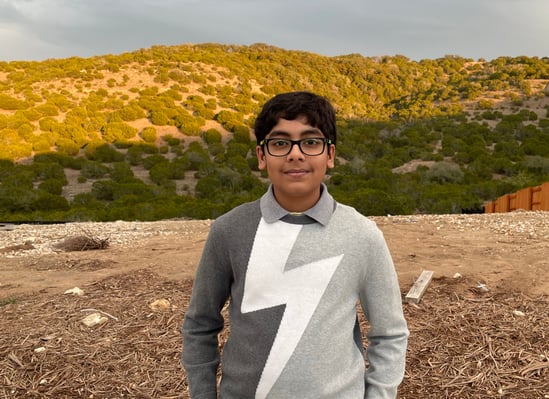Here at Write the World, we think a lot about the peer review process and how it helps both the review giver and receiver. But Ravi Tej Guntuku (US), Best Peer Review winner for our Creative Nonfiction Competition, told us about his peer review practice that even we hadn’t considered before: the “self-review,” or the process of taking our guided peer review questions and applying them to your own draft. We’ll certainly be adding this tip to our writing toolboxes, and we hope you will too!
Below, we talk more to Ravi about his peer review process, his favorite works of nonfiction, and his writing goals for the new year.

Guest Judge Rachel Friedman praised your use of “probing questions” to help the writer think “about specific potential improvements.” How did you ensure you were asking the right questions that would help but not overwhelm the author?
Sometimes, when I review a piece of writing, I tend to only correct the nitty-gritty grammar mistakes or just blatantly tell the writer what they should write. However, this type of feedback can demolish the creativity and personality in a piece, and might urge the writer to hit that grey, delete button in their beautiful piece filled with flurries of great ideas. Instead, I like to sprinkle in some thought-provoking questions that allow the writer to ponder ideas and open new doors. I also try to find a balance between too vague and too specific with my questions. I usually do this by citing an excerpt from the work and ask something open-ended like “How does this particular character make you feel?” or “How would you describe this place?”
How does the practice of peer reviewing support your own writing?
Peer reviewing not only allows me to help other drafts blossom, it also makes me hyper aware of how I convey my ideas in a piece. After finishing the first draft of a story, poem, or prose, I sometimes look at the feedback I gave to other fellow writers and try applying those tips while revising. If I still remain dissatisfied, I give myself a full-fledged peer review—a technique I like to call “self-review”—which shows me the gaps I need to fill in my piece.
Your review demonstrates your understanding and appreciation of the Creative Nonfiction genre. What are some of your favorite works of Creative Nonfiction?
Creative Nonfiction allows the author to paint their story with their heart and soul. One of my favorite works of Creative Nonfiction is I am Malala: How One Girl Stood Up for Education and Changed the World. It demonstrates how many people around the world, particularly women, do not have access to an education while showing how we all can shape the world with just a pen and paper. Another favorite is The Diary of A Young Girl by Anne Frank. Today, while most of us are attending online school and quarantining at home, it reminds us that with enough courage and endurance, we can overcome the obstacles that life presents us.
What is your writing goal for 2021?
My goal is to write more. I intend to be more active on Write the World, publishing poetry, memoirs, fiction, and much, much more.





